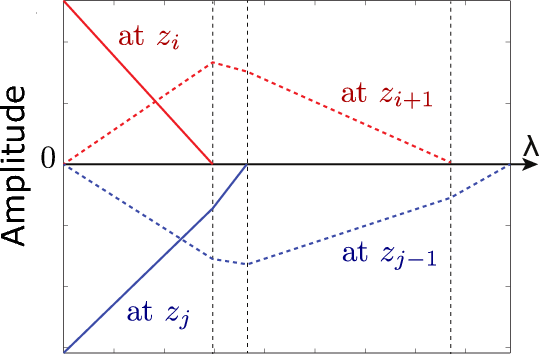Section: New Results
Stability for inverse problems with sparsity prior
G. Peyré, V. Duval, Q. Denoyelle,C. Poon
In [42] , we have analyzed the recovery performance of two popular finite dimensional approximations of the sparse spikes deconvolution problem over Radon measures, namely the LASSO, and the Continuous Basis-Pursuit. The LASSO is the de-facto standard for the sparse regularization of inverse problems in imaging. It performs a nearest neighbor interpolation of the spikes locations on the sampling grid. The C-BP method, introduced by Ekanadham, Tranchina and Simoncelli, uses a linear interpolation of the locations to perform a better approximation of the infinite-dimensional optimization problem, for positive measures. We have proved that, in the small noise regime, both methods estimate twice the number of original spikes, and we have provided an explicit formula which allows to predict the locations and amplitudes of the spurious spikes. All those properties are in fact connected to an intrinsinc property of the signal: the source condition [16] , [24] .
|
Those effects are typically due to the use of a discrete grid in the reconstruction process. Several authors have recently proposed algorithms to tackle the problem directly in a continuous setting [75] , [92] . As we have shown in [16] , the method fails when the distance between spikes with opposite signs are below a certain threshold. However, when all the spikes have the same sign, the LASSO on a continuous domain works for arbitrarily close spikes, being all the more sensitive to noise. In [40] , we have given a detailed analysis of the noise sensitivity of the method: if denotes the minimum separation of the input measure (the minimum distance between two spikes), refers to the noise and is the regularization parameter, when , and are small enough (where is the number of spikes), there exists a unique solution to the BLASSO program with exactly the same number of spikes as the original measure. We show that the amplitudes and positions of the spikes of the solution both converge toward those of the input measure when the noise and the regularization parameter drops to zero faster than .


